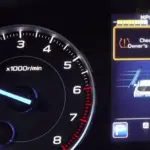How to Put Brake Fluid In?
Ah, brake fluid – the unsung hero of the automotive world, quietly ensuring you don’t turn your morning commute into a bumper car session. As someone who’s had their fair share of “Oh no, why isn’t this thing stopping?!” moments, I’ve come to appreciate the art of checking and adding brake fluid. It’s a skill as essential as knowing how to make a decent cup of coffee, and trust me, it’s not rocket science (but it can prevent your car from acting like a misguided missile).
January 31, 2024
Table of ContentsShow
Understanding Brake Fluid: More Than Just Liquid
Before we dive into the how-to, let’s have a quick chat about what brake fluid is. It’s a type of hydraulic fluid used in brake and clutch systems. Basically, when you press the pedal, it transfers the force into pressure, helping to stop your car. There are different types of brake fluid, like DOT 3, DOT 4, and DOT 5, but it’s not a “the higher the number, the better the fluid” kind of deal. Your car’s manual is your best friend here; it’ll tell you exactly what your car needs.
Why Does it Matter?
Imagine going downhill, and your brakes decide to go on a vacation. Scary, right? Regularly checking and changing brake fluid is crucial because it absorbs moisture over time, which can lead to brake failure. So, unless you’re practicing for a stunt driver audition, keep that fluid in check.
Step-by-Step Guide: The Main Event
Alright, enough chit-chat. Let’s get down to business. Here’s your step-by-step guide to adding brake fluid:
Tools You’ll Need
The right brake fluid (check your car’s manual)
Clean rag or towel
Gloves and safety glasses (because safety is sexy)
A funnel (optional but highly recommended)
Locate the Brake Fluid Reservoir
First things first, pop the hood of your car. The brake fluid reservoir is usually located on the driver’s side, towards the back of the engine compartment. It’s a small, plastic container near the base of the windshield. If you find yourself staring at the engine like it’s a puzzle, the reservoir is typically labeled, so keep an eye out for that.
Check the Fluid Level
The reservoir is usually transparent, so you can check the fluid level without opening it. There are “minimum” and “maximum” lines on it. If the fluid is below the minimum line, buddy, you need a top-up.
Clean the Reservoir Cap
Before you open the reservoir, wipe the cap and surrounding area with a clean rag. You don’t want any dirt or debris falling into the brake fluid – that’s like pouring pepper into your morning tea, not a great mix.
Open the Reservoir
Carefully unscrew the cap. If it feels like you’re trying to crack a safe, you’re probably turning it the wrong way.
Add the Brake Fluid
Use your funnel (if you have one) and slowly pour the brake fluid into the reservoir. Remember, overfilling can be as bad as not having enough, so keep an eye on that max line. It’s like pouring beer; you don’t want it to overflow and waste all that good stuff.
Close the Reservoir
Screw the cap back on securely. If you leave it loose, it’s like leaving your front door unlocked – not a good idea.
Clean Up and Test
Wipe away any spills and close your car’s hood. Now, give your brake pedal a few presses to make sure it feels right. It should be firmer than a handshake but not as hard as your math teacher’s heart.
Some Handy Tips
Check Regularly:
Make it a habit to check your brake fluid whenever you’re doing other car maintenance stuff, like changing the oil or feeding the squirrels in your engine (just kidding, please don’t do that).
Never Mix Fluid Types:
Mixing different types of brake fluid is like putting ketchup on ice cream – a terrible idea.
Safety First:
Wear gloves and glasses. Brake fluid is not skin or eye-friendly.
Dispose Properly:
Don’t just throw old brake fluid in the trash. It’s harmful to the environment, and Mother Nature has enough on her plate.
Conclusion: Be the Hero Your Car Deserves
Adding brake fluid isn’t just about car maintenance; it’s about being a responsible driver. By keeping your brake fluid in check, you’re ensuring your safety and that of others on the road. Plus, it’s a great way to show off your newfound car knowledge to your friends and family, or at least to your dog.
Remember, cars are like pets – they need your care and attention. So, next time you’re about to embark on a journey, give a little thought to the humble brake fluid. It might just be the difference between a smooth ride and a “Why is my car making that funny noise?” moment. Happy driving!


